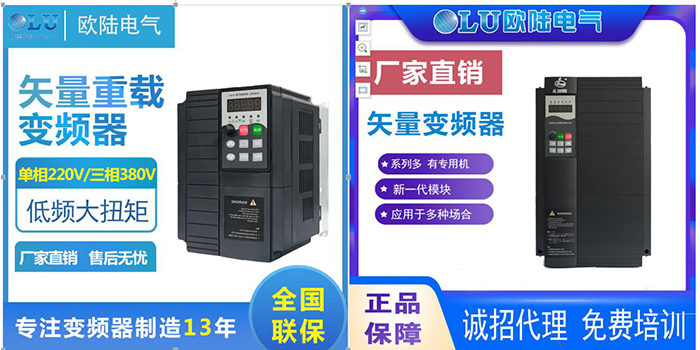What are the main functions of frequency converters? In which fields can they be applied?
Speaking of frequency converters, I believe everyone with electrical experience is familiar with them, but some outsiders and those new to frequency converters may still not understand them. To accommodate this group, as a frequency converter manufacturer, Nanjing Oulu Electric's editor will give a brief introduction here.
What is a frequency converter? We can simply understand it literally: an electrical device that changes the frequency of the power supply. Although this literal understanding may not be very rigorous, it is easy to understand and helps people quickly grasp the concept. So after understanding what a frequency converter is, let’s learn about its main functions and in which fields it can be applied?
First, let’s understand the main functions of frequency converters. There are many types of frequency converters on the market, such as voltage-type/current-type frequency converters, PAM/(high carrier frequency) PWM control frequency converters, V/f control/slip frequency/vector control frequency converters, general-purpose/high-frequency/high-performance dedicated frequency converters, and single-phase/three-phase frequency converters, etc. As for their differences, due to the extensive content, we won’t go into detail here. Those interested can search online for more information—there are plenty of detailed resources. Here, we’ll use the current-type frequency converter as an example to explain: its main function, just like its name suggests, is to change the power supply frequency, such as converting AC power to DC power (rectifier circuit) or DC power to AC power (inverter circuit). In summary, it achieves the purpose of changing the motor speed by varying the power supply frequency!

Now that we understand the role of frequency converters, what are their practical applications, and in which fields can they be used?
Frequency converters are very common in our daily lives. For example, well-known appliances like inverter air conditioners and refrigerators may sound advanced, but the principle is simply the addition of a frequency converter to standard devices, enabling automatic frequency adjustment. This allows for intelligent control, determining when to use which frequency as needed.
Of course, these applications in household appliances are just the beginning. Where frequency converters truly excel is in industrial automation control. They meet the demands of modern industrial production with functions such as PG vector control and V/f control, playing a crucial role in industrial operations. They have not only become indispensable equipment but also cover the vast majority of production sectors. Frequency converters are widely used in the field of industrial automation.

As a product born from industrial automation, the frequency converter not only serves its primary purpose of frequency conversion but also provides protection functions such as overcurrent, overvoltage, and overload protection. From the current situation, modern industry can no longer do without it!
It is believed that with the continuous development of the industrial sector, the frequency converter industry will also experience even more rapid growth. Nanjing Oulu Electric, as a professional manufacturer of frequency converters, offers a comprehensive range of models with power ratings covering from 0.4 kW to 700 kW. You are welcome to contact us for further inquiries.